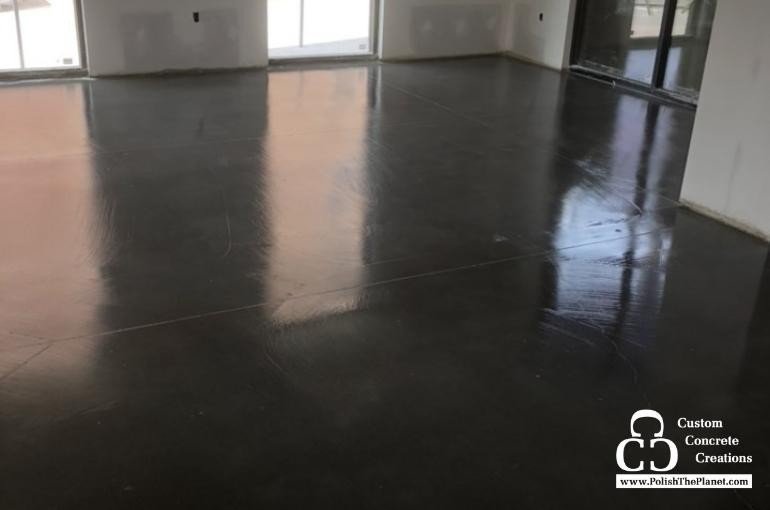
We have seen a lot of rain recently, and an abundance of rain could cause damage to concrete floors. Even if the concrete floor was properly poured and you’ve been maintaining it well, moisture can sneak in and cause problems. Luckily, we’re able to identify causes and notice signs, helping us protect concrete floors in the long run.
A polished concrete floor or epoxy coating are two great flooring solutions. Polished concrete is durable in wet environments but needs to be sealed regularly to ensure moisture stays out. Epoxy floors are slip-resistant and can protect the concrete underneath. Depending on the space, we can help you determine which is best for you. Keeping concrete floors dry when it rains and preventing moisture damage will keep your flooring in great condition.
What causes concrete floors to “sweat”
Concreting sweating is when warm outside air comes into contact with interior cool concrete, causing moisture to develop on the surface. If it’s humid outside, it can occur. This isn’t necessarily a water problem, but definitely something to take into consideration. Sealants are important because they keep out mold and mildew.
As strong as concrete is, cracks are sometimes inevitable. If your concrete floors have experienced any cracks, joint sealants are necessary, and moisture insensitive products are available.
Signs of moisture in concrete floors
Other things that can cause water damage include weather such as heavy rain and snow. When the ground below the concrete flooring cannot hold any more moisture, it will begin to seep into the inner flooring. Signs to look for include discoloration, peeling, lifting, bubbling, and cracking.
You’ll need to discover where the seepage is coming from and figure out the amount of moisture in the air. Doing a concrete moisture test, a calcium chloride test, or relative humidity test can help. Each of these have a different process but can all determine the amount of moisture and let you know if there is an actual problem.
How to protect concrete floors from moisture
Whether your concrete floor is sweating or you have a different water problem, it’s important to fix because it not only damages the flooring, but can also cause slips and falls. There are things you can do before and after slab construction. Sand and insulation under the concrete floor in the first place can help prevent moisture from getting to the concrete when it rains and snows. Below are some ways to keep floors dry on a rainy day:
-
Use a floor fan to help dry the concrete right away.
-
Adjust the temperature up or down to make it the same temp as outside to help prevent “sweating.”
-
Utilize a dehumidifier.
-
Put down floor and entry mats to keep moisture off the floor when there’s incoming foot traffic during the rain.
At Custom Concrete Creations, we specialize in polished concrete and epoxy flooring. We can help you decide which flooring option is best for your warehouse or business, and ensure it’s protected from rainy day chaos. Contact us today to discuss in greater detail.
